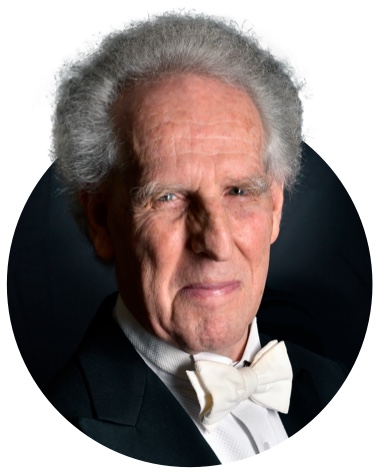Bach: Violin Partita no. 2 - Allemanda and Sarabanda
Katharina Giegling (violin)

“You are telling the story of each note.”
— Benjamin Zander

Video Transcript
Ben Zander: Great. Beautiful. Really beautiful. Should we talk a little bit about that and then do the Sarabande after that? It’s a very interesting situation because, a little bit like the discussion on the Beethoven, this has become such a normal way of playing that I almost don’t want to interfere with it because it’s a beautiful thing. You are using all the techniques that have been developed by the great violinists, of the sharing, Perlman, and all those people. You are a wonderful player and you play it beautifully and it has a gorgeous sound.
Ben Zander: And so I don’t, in a way, want to interfere except I’d like, with the Beethoven, I’d like to just draw your attention to another way of playing it which is less romantic, both in sound and in timing. Now that doesn’t mean it has to be straight, but I find the timings, and also the sound, so rich and full that I don’t think, on a bark violin, it would’ve been done that way. And the question then is, what do you lose by doing it in a more authentically, historically informed way? That’s the phrase. I always think that Bach was a Protestant. And Thomas à Kempis who was a great theologian said, the more you renounce, the more you gain. It’s a very interesting idea. The more you renounce, the more you gain.
Ben Zander: And I think there’s something in the simplicity of this music. I can’t play it, forgive me, on the piano. Just simple as can be with a very light sound, and the harmonies and the way that the voices are led are so beautiful. You don’t have to add anything to it. So, should we just try that? Can I even suggest that you stand very still?
Ben Zander: Beautiful. That’s coming very beautiful. The song that I love to refer to as the cosmic pulse of Bach is just. Played even a little bit more restrained in sound so that it’s purer, almost as if you had gut strings. Have you played on gut strings with a Bach bow? You know that feeling of lightness. So let’s try that. So give up Henryk Szeryng, let’s leave him away. And just go back into that simplest simple world. Three, four.
Ben Zander: Gorgeous. That’s gorgeous because that takes the ear of the listener to what’s happening to the music. That’s what we have a D and then we have a C sharp. And this is so simple. It’s the dance of the allemande. There’s the G sharp because all that’s B flat. And then. One more time, three, four. Three, four.
Ben Zander: Beautiful go on. Beautiful. Beautiful. Brava.
Ben Zander: It’s a different way. It’s a different way. But the simplicity of it and its directness draws the listener’s ear to the music rather than to your playing of the music. And your job is as a guide to say, this is what’s happening, and this note is going to this note, and this note, and this note. And you are telling the story of each note, rather than saying, listen to my glorious violin playing. And it is glorious. But to me, it’s a distraction from what I want to hear when I hear the music. And I think the keyboard players are useful guides because they don’t do that. It’s a simpler gesture. Do you see what I mean? It’s worth thinking about.
Ben Zander: So, let’s try the Sarabande.
Ben Zander: Beautiful. Beautiful. Lovely. That’s already a simpler sound. It takes us to another world. Otherwise, you are dragging Bach into our world. And it’s like, I hate when I go to the opera and I watch Mozart’s Marriage of Figaro in the 1950s. I don’t want to see Mozart’s Marriage of Figaro. I want to see it exactly in that time because his music and his harmonies and the textures fit those thoughts and those words and those situations from that period. So I think again, as Thomas à Kempis says, you gain more.
Ben Zander: I would even think you could do it lighter. Have you ever tried to dance this? Can you dance and play the violin together? Like this. Two, and.
Ben Zander: Can I suggest instead of this gesture, instead of this gesture, think of this gesture, think of it as up. It’s 1, 2, 3, 1, 2, 3. It’s like walking on a trampoline.
Ben Zander: Better, better. Can you make all your gestures up? Two, three.
Ben Zander: I love that. And if you want, of course at the end is fine to end. And there’s one other place here. We go on and do the repeat.
Ben Zander: Brava. Brava.
Ben Zander: It’s very interesting when colleagues get together to talk about music because you’re not a student, you’re an artist. I open a way of thinking and you take it on, and you try it, and you try it on like a beautiful suit and you say, yeah, that feels great. And then you walk away and you’ve taken that experience. It doesn’t mean you have to follow it, but it’s a way that draws the audience, the listener, into the music in the way that so many modern violinists play it doesn’t do that. It takes this music and makes it sound like Bach or like Schumann, and that just, it’s another world. Great, beautiful. Thank you so much.